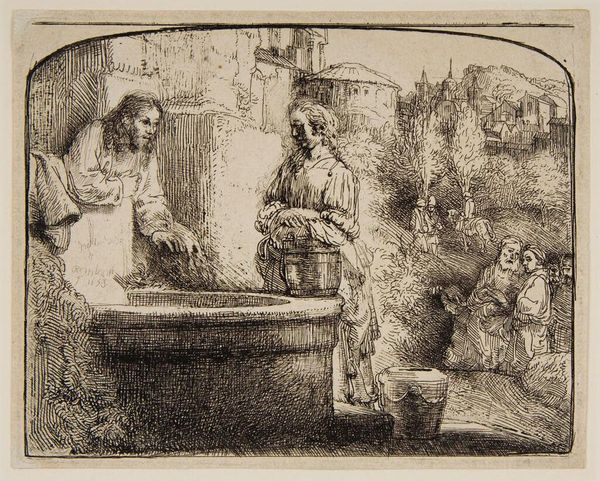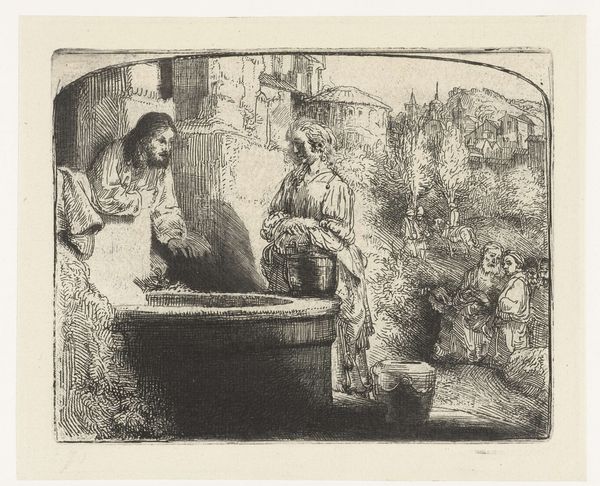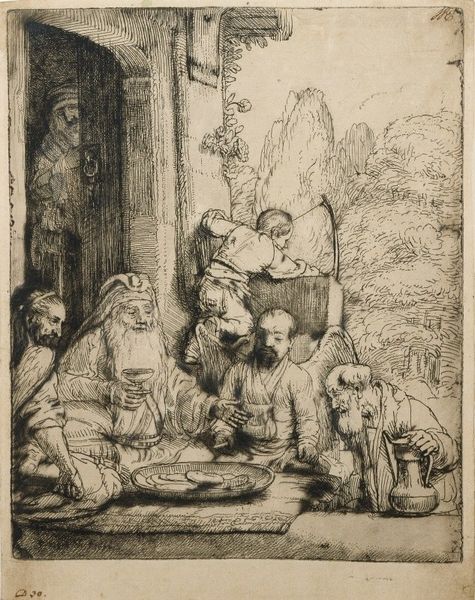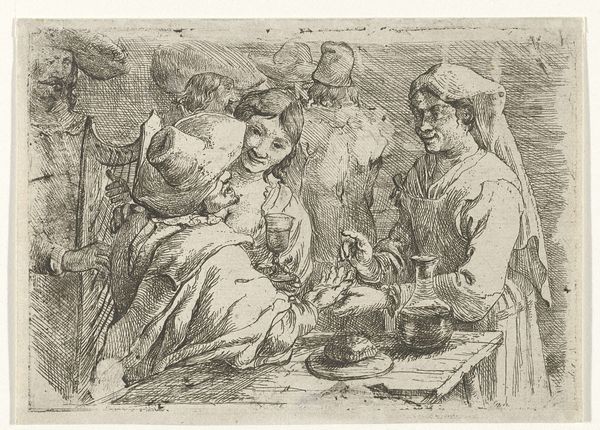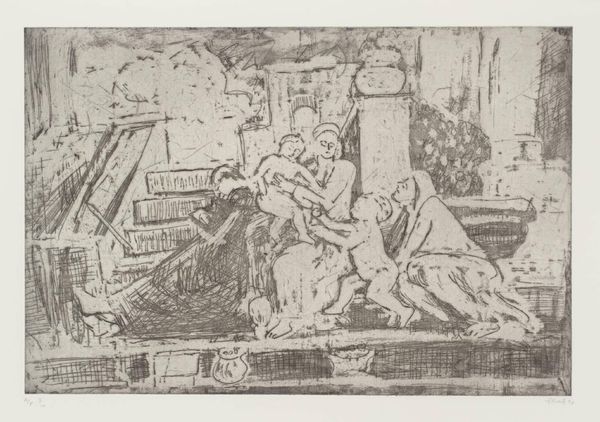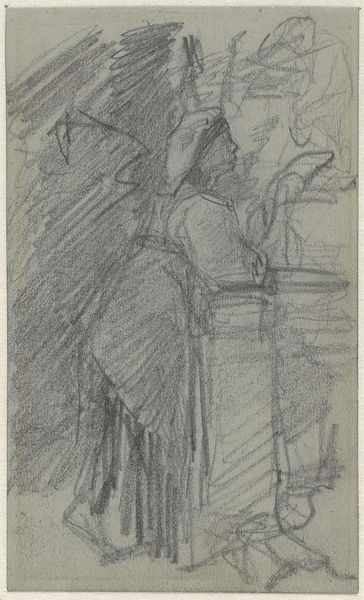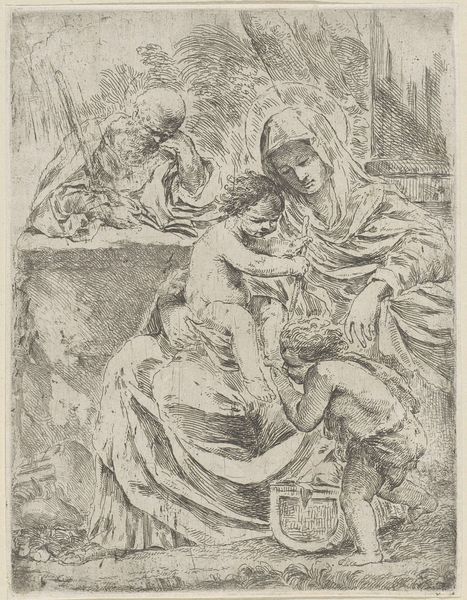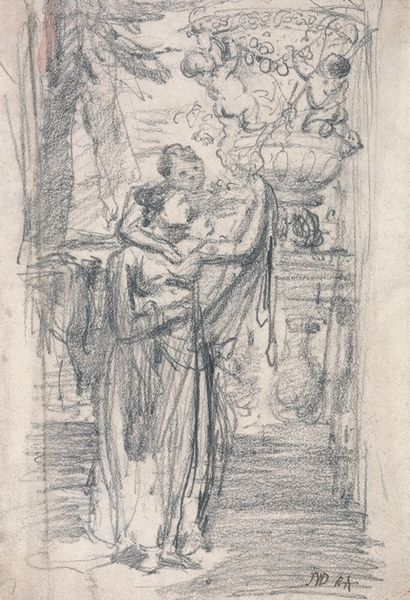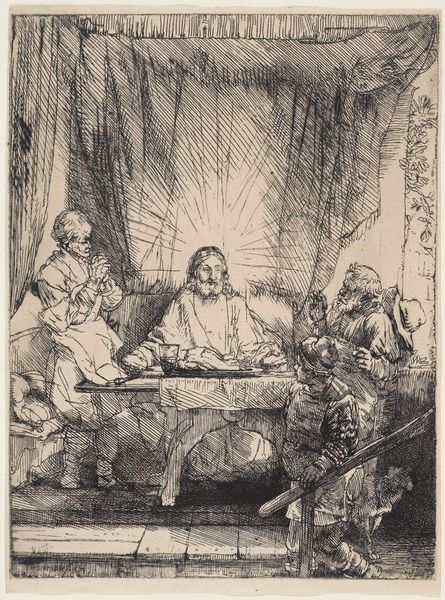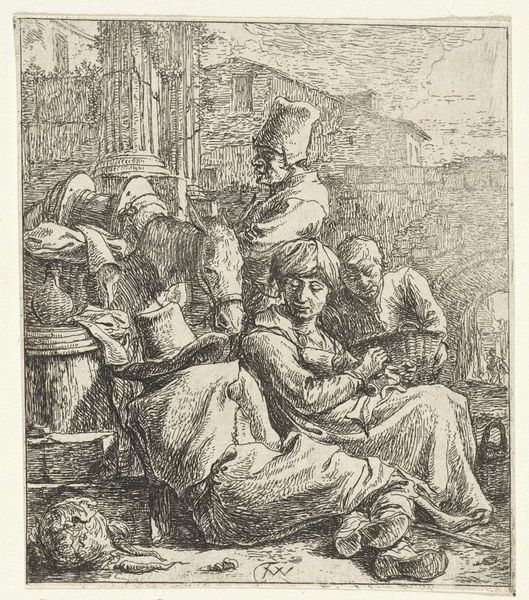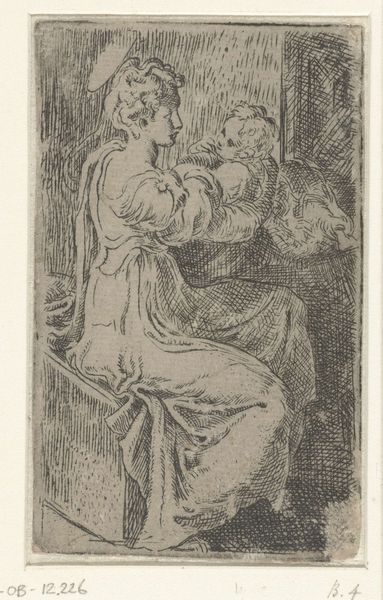
drawing, print, etching
#
drawing
#
baroque
# print
#
etching
#
figuration
#
chiaroscuro
#
line
#
genre-painting
#
history-painting
Copyright: Public Domain: Artvee
This etching by Rembrandt, depicts Christ's encounter with the Samaritan woman, drawing water from a well. The well, a symbol of life and spiritual sustenance, has appeared throughout art history. The act of offering water signifies deeper truths. In antiquity, water goddesses were revered as life-givers and symbols of purity and fertility. The well itself becomes a powerful metaphor for the source of wisdom and salvation. It reappears in countless forms, each a reflection of cultural memory, such as ancient Greek fountains or Renaissance depictions of biblical stories. Rembrandt masterfully captures the psychological tension in this encounter, the woman's posture, the landscape and the expressions revealing inner turmoil and spiritual awakening. This powerful visual language engages viewers on a subconscious level, inviting reflection on universal themes of faith, redemption, and the search for meaning. The cyclical journey of symbols like the well continues. It evolves in form but remains a constant presence in our collective consciousness.
Comments
rijksmuseum about 2 years ago
⋮
In this later print, Rembrandt depicts the moment when Christ, with his hand on his chest, reveals that he is the man about whom the Samaritan woman has heard. The apostles further away in the middle ground blatantly show their astonishment that he is speaking to her. The landscape and the buildings suggest an Italian influence, but what example Rembrandt relied on is not clear.
Join the conversation
Join millions of artists and users on Artera today and experience the ultimate creative platform.
